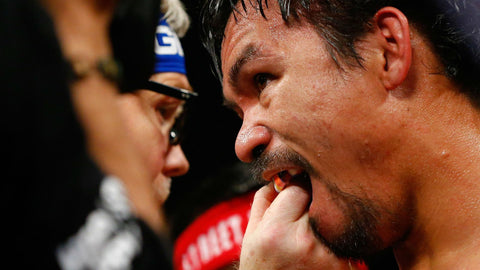The Role of Mouthguards in Boxing
Engaging in boxing, renowned for its dental risks, underscores the imperative of prioritising oral health.
According to WBN10, safeguarding against common dental issues is paramount in martial arts and physical activities, with mouthguards emerging as a critical line of defense.
Mouthguards: The Guardian of Dental Health
Mouthguards, likened to crash helmets for teeth, are indispensable for athletes participating in contact sports such as boxing, hockey, and lacrosse.
The American Dental Association (ADA) underscores their significance, revealing that athletes abstaining from mouthguards are 60 times more susceptible to dental injuries.
These protective devices act as a cushion, mitigating the impact of blows that could lead to broken teeth or jaw fractures. The ADA recommends tear-resistant, properly fitted mouthguards that do not impede airways, ensuring safer sports practice.
The Role of Mouthguards in Preventing Periodontal Disease
Understanding prevalent dental issues in boxing sheds light on the necessity of mouthguard use.
A notable concern is periodontal disease, with a study of 302 athletes, including boxers, revealing that 76% developed gingivitis when not using mouthguards.
Gum disease not only hampers training and performance but also serves as a gateway to more severe oral conditions. Proper mouthguard hygiene is crucial in preventing infections and inflammation.
The Impact of Mouthguards in Dental Injury Prevention
Tooth fractures are a recurring dental injury in boxing, occurring at a 60% rate in contact sports like MMA and boxing, as per the Department of Oral & Maxillofacial Surgery.
Mouthguards play a pivotal role in redistributing shock and stabilising the jaw during impacts, significantly reducing the risk of dental trauma. Without them, tooth fractures may necessitate endodontic treatment and subsequent pain management.
Seeking prompt dental care is essential, as untreated fractures can lead to further infections.
While boxing may not be the direct cause of gingivitis or tooth fractures, the importance of proper mouthguard hygiene cannot be overstated. Regular sanitisation between uses is imperative to reduce these risks.
Shaping a mouth guard
Empowering Boxers with Dental Health Knowledge
Comprehending the protective role of mouthguards and acknowledging potential dental issues in boxing are essential for athletes striving for peak performance.
With this knowledge, boxers can confidently step into the ring, assured that their dental health is well-protected, allowing them to focus wholeheartedly on refining their skills.
































